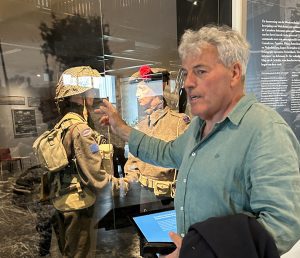
It all began with a barn loft full of relics. As a boy growing up in the Scheldt River estuary of the Netherlands, Kees Traas heard stories about the soldiers who’d liberated his country in the Second World War. But it wasn’t until the 1960s, when he was a teenager exploring his uncle’s workshop that he learned his liberators were from Canada and worth celebrating.
“The 30th of October, 1944, our community was liberated by the Canadians,” Traas (now 58) told me this Liberation Week in the Netherlands. “My uncle saved war artifacts. So, as kids we played with them, and he gave me a Canadian helmet. That was the beginning.
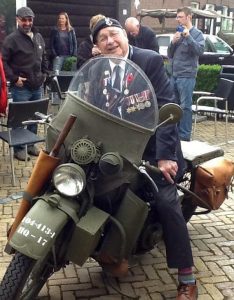
“I began my working life as a carpenter and a guy said to me, ‘I have a lot of stuff. I’ve got a Canadian jeep and if you rebuild the house, you can have it.’ So, I worked a year of evenings and Saturdays, rebuilt the house and he gave me the jeep. Next, he said, ‘I have a Canadian Harley (motorcycle). If you rebuild my shed, you get the Harley.’”
Twenty years ago, when I first met Traas at his modest museum in Nieuwdorp, Netherlands, he led us in groups of 10 or 12 up a ladder and into the attic of a building where he displayed hundreds of wartime items.
On the lawn in front of his house, he had the propellor of an Allied Liberator bomber the Germans had shot down, one of “more than 600 aircraft that crashed here in the Battle of the Scheldt.”
In late 1944, success of the Allied liberation of Northwest Europe depended on securing the massive seaport of Antwerp as the resupply point for the final push across the Rhine to defeat Nazi Germany.
“I know the Battle of the Scheldt was one of the most important battles,” Traas told me. “But nobody knows about it. I had a large collection and began to work on expanding the museum to tell the story.”
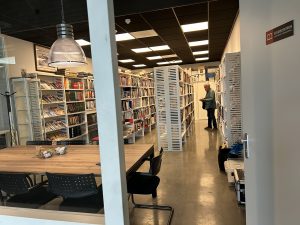
Today, what began as Kees Traas’s tiny attic museum has grown to become a major attraction: a sparkling tourist centre, documentary screening theatre, additional buildings full of wartime vehicles (in their wartime condition), recreations of Scheldt battlefield locations, a library, and more than 40,000 historical pieces on display. For Traas, this has become a lifelong tribute to his Canadian liberators.
Another friendship rekindled this Dutch Liberation Week, as I’ve had the honour to lead Canadian history buffs across the Netherlands, was that of Geert Polak. When we arrived in Bergen op Zoom on Saturday evening, he joined our tour group for dinner.
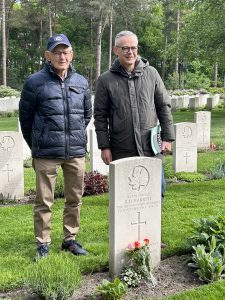
Next day, he told us why – for most of his adult life (he’s now 86) – he has tended the graves of soldiers killed in the Battle of the Scheldt and buried near his home in Bergen op Zoom Canadian Cemetery. Among the headstones and plots where he regularly lays flowers is that of Private Robert Harrell; he died at 23 on Oct. 13, 1944. Coincidentally, Harrell was the cousin of a good friend of mine, Rob Longworth (Rob was named after Pte Harrell).
“I didn’t know my cousin and namesake except from old stories and a picture of him holding me as a baby before he went overseas,” Longworth wrote in Remembrance Day tribute several years ago. “I visited Bobby’s grave in 2008 (and) left flowers and a copy of his death notice and my business card. Imagine my thrill in 2009 when I received a moving email from a certain Geert Polak.”
In part, here’s how Polak responded: “I live in Bergen op Zoom. Once a month I visit the Canadian War Cemetery (here) because we take care of the graves of Canadian soldiers who died here for our freedom. I saw that you had been here also to visit your cousin’s grave to bring a flower. I was there last week and the flower is still there. … I do this because we have so much respect for the Canadians.”
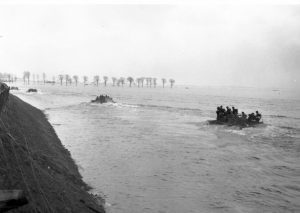
The Battle of the Scheldt, which some consider the deadliest in the liberation of the Netherlands (in 1944-45), cost more than 5,000 Canadian lives. One might think – 80 years on – that the significance of their sacrifice might be fading. Not in the Netherlands.
This week alone, several thousand visitors from across Europe and North America passed through Kees Traas’s Liberation Museum of Zeeland. Indeed, Dutch government experts predict more than 3.5 million tourists will visit the area every year from now on.
For men like Geert Polak and Kees Traas, the work of national Remembrance goes on.